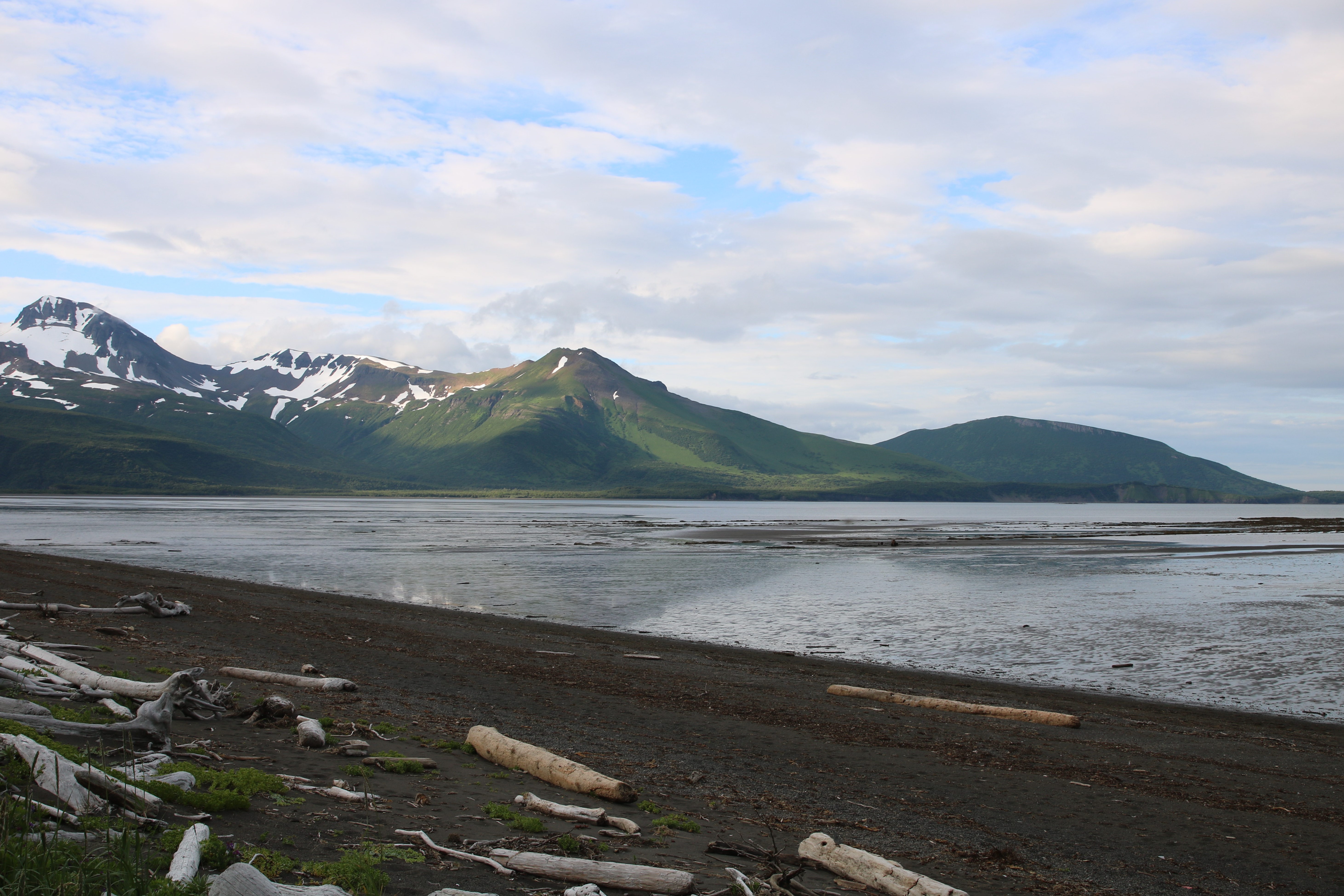
When many people think of Hallo Bay, they think of the brown bear population that lives in the area, or perhaps they think of the magnificent Hallo Glacier that descends from the vicinity of Mt Denison (the highest point in Katmai National Park & Preserve) and Mt Stellar to sea level just inland from Hallo Bay.
Yet, there is perhaps a more notable force at work in the bay itself that deserves noting – the tide.
Tides are primarily driven by the impact of the moon’s gravity on the earth. The sun contributes a small percentage of tidal forces as well, but being much farther away, its influence is much less despite its greater size. At times of the month when the forces of the moon and the sun align, spring tides (higher than average tides) are produced, and at times when they work in opposition, neap tides (lower than average tides) are produced. Tides also tend to be higher in January when the earth is closest to the sun, and lowest in July when the earth is farthest from the sun.
All tides worldwide fall into one of three categories – diurnal, semidiurnal, or mixed semidiurnal. Diurnal tidal areas have one high and one low tide per day, and occur in places where continents interfere greatly with the tidal forces, including the Gulf of Mexico and the western coast of Alaska, from the Bering Sea through the Bering Strait and north through the Chukchi Sea. Mixed semidiurnal tides have two high and two low tides per day, but they are of different heights. They predominate on the US west coast, with certain exceptions. Semidiurnal tides, the natural default, manifest as two high and two low tides daily of approximately equal height. They predominate on the east coast of the US, as well as the Cook Inlet and Shelikof Strait region of Alaska, including the Katmai coast.
The Katmai coast boasts some of the highest tidal range in the world. It’s not quite the Bay of Fundy (home to thehighest range in the world, over 50 feet), but it’s enough to empty much of the western portion of Hallo Bay, turning it into vast tidal flats. This, in turn, opens up a whole new world for the wildlife populations. There’s an old [Native Alaskan] saying that “when the tide is out, the table is set.” Bears that settle for sedge grass in Hallo meadows at high tide will venture out onto the tidal flats and dig for razor clams at low tide. Many of the most interesting wildlife sightings other than bears come at low tide as well – coastal wolves, various bears, bald eagles, and river otters can all be sighted interacting with each other on the flats.
